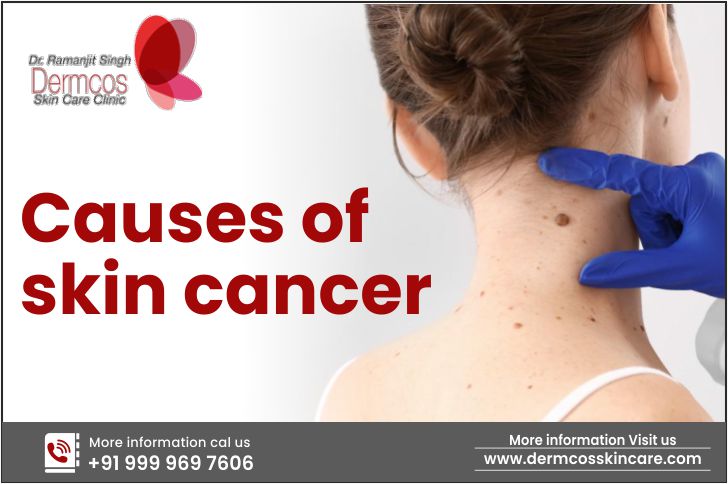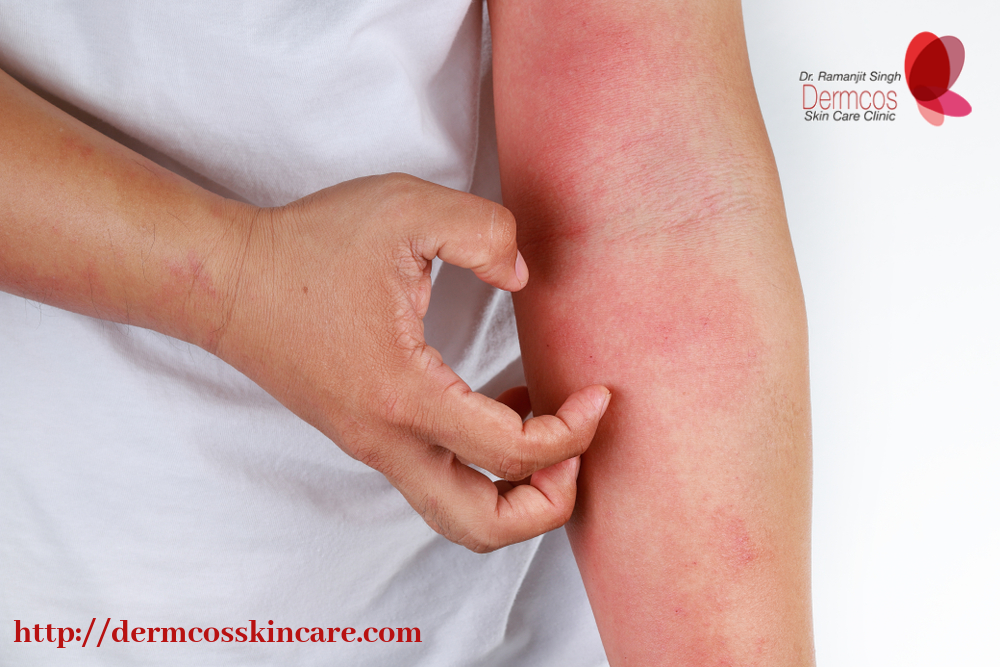Skin cancer is one of the most common forms of cancer in which there is an abnormal and uncontrolled growth of skin cells. When the cells grow and divide abnormally, they spread to other areas of the body through the lymphatic system.
Most skin cancers can be generally seen on the areas of the skin which are more exposed to ultraviolet (UV) rays, including ears, neck, arms, chest, upper back, hands, and legs, either from the sun or from artificial sources like the tanning beds. However, this common form of cancer can also occur on areas of the skin that are not exposed to sunlight, including between your toes, on the palms of your hands, and genital areas, among others.
Different causes of skin cancer:
When mutations develop in the DNA of your skin cells, skin cancer occurs. The skin cells grow uncontrollably through such mutations and a mass of cancer cells is formed. Overexposure to the ultraviolet rays, which result in sunburn and blistering, is considered one of the leading causes of skin cancer. When our skin is exposed to UV rays, the skin’s DNA is damaged, and the skin cell growth can’t be controlled properly when the DNA is altered, leading to cancer. Contact with certain chemicals like tar and coal are other causes of skin cancer. Thus, you can become more prone to skin cancer if-
- You spend more time working or playing in the sun.
- You even have a history of sunburns in the past and if you live in a high-altitude/sunny climate.
- Having light-coloured eyes, blond or red hair or freckled skin can also increase your risk of skin cancer.
- If you have many moles or irregularly shaped moles.
- A family history of skin cancer may put you at further risk of the disease.
- If you have undergone an organ transplant, you are at risk.
- If you are under medications that, in a way, weaken your immunity.
- If you have skin conditions like eczema or psoriasis and have been exposed to UV light therapy, you are at skin cancer risk.
It is advisable to consult your doctor to get a clear picture of the skin cancer and other aspects like recovery time, costs involved, etc. related to it. Skin cancer treatment cost or price may depend on several factors, including the size & shape of moles, stage as well as experience of the doctor.
Types of skin cancer
There are mainly 3 major types of skin cancer- Basal cell carcinoma, squamous cell carcinoma, and melanoma.
- Basal cell carcinoma
Basal cell carcinoma is seen in sun-exposed areas of your skin, including the head and the neck. Most basal cell carcinomas are caused due to overexposure to UV rays. Such cancers appear like a change on your skin, like a growth or sore that won’t heal. Its other characteristics include shiny, skin-coloured bumps, black, brown, or blue lesions, and flat, scaly patches. It can take another form as well and begins in the basal cells. You can protect yourself against basal cell carcinoma by avoiding the sun and using sunscreen.
- Squamous cell carcinoma
It is a common form of skin cancer that is not life-threatening but can be aggressive. Also, if left untreated, they may grow large or spread to other parts of the body, leading to serious complications. Avoiding overexposure to UV rays and tanning beds can protect us from squamous cell carcinoma and other forms of skin cancer. Signs of such cancers which occur on sun-exposed skin and even inside your mouth and genitals, including
1. A firm red nodule.
2. A rough, scaly lesion might itch, bleed and become crusty.
3. A red sore or rough patch inside your mouth
- Melanoma
It is considered to be the most serious type of skin cancer. It develops in melanocytes that produce melanin- the pigment responsible for giving color to your skin. They can develop anywhere on your body and are most commonly found in areas such as the back, legs, arms, and face. It can even form on your eyes and internal organs. The signs and symptoms of such cancer include-
1. A brown-pigmented patch or bump
2. A mole may often change the size and color or even bleed.
Like other skin cancer, the causes of melanoma include exposure to UV rays from the sun or tanning lamps/beds. If detected early, that melanoma can be treated easily.
Skin cancer treatment
Skin cancer treatment and precancerous skin lesions known as actinic keratoses depend on numerous factors, including size, type, depth, location of lesions, and stage of cancer, among others. Furthermore, if the small skin cancer is limited to your skin’s surface, the cancer tissue can be removed through biopsy. Other common skin cancer treatments include-
1. Cryotherapy
In such treatments, liquid nitrogen is used to freeze skin cancer. It is after the treatment that the dead skin sloughs off. Actinic keratoses and some small, early skin cancers can be treated with this method.
2. Excisional surgery
This method may be used to treat any form of skin cancer where the tumor and surrounding healthy skin are removed. In some cases, removing the extra normal skin around the tumor is recommended.
3. Mohs surgery
Such procedures involve removing the visible, raised area of the tumor following which the thin layer of skin cancer cells is removed using a scalpel. Right after the removal, the layer is closely examined under the microscope and additional layers of tissue are continuously removed until no abnormal cells remain. Through this process, cancerous cells can be removed without taking much surrounding healthy skin.
4. Radiation therapy
In such methods, high-powered beams, such as X-rays are used to kill the cells causing cancer. When cancer can’t be removed completely through surgery, radiation therapy is preferred.
5. Chemotherapy
In such treatment methods, medications are used to destroy the cancer cells. The anti-cancer medications can directly be applied to the skin if it’s limited to the skin’s top layer. Systemic chemotherapy may be used if cancer has spread to other body parts.
6. Photodynamic therapy
The skin cancer cells in this treatment are destroyed using a combination of laser lights and drugs that make cancer cells sensitive to light. The precancerous cells are destroyed while leaving normal cells alone.
Conclusion
Skin cancer is a very common disease, but it is life-threatening, and therefore, one should never take it lightly. If any symptoms signal probable chances of skin cancer, then it is recommended to consult a doctor as soon as possible. Early detection of skin cancer can help prevent the spread of the disease and even save the patient.



